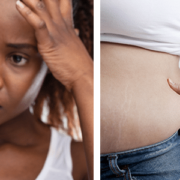Adjust Your Workout Routine After 40 to Build Strength & Muscle
Are you in your fabulous 40s and feeling like your usual workout routine just isn’t cutting it anymore? Don’t sweat it, because you’re not alone. Our bodies go through some major changes as we age, and that means the exercise routine that once worked like magic in our 20s and 30s might need a little adjustment. But fear not! There are plenty of ways to tweak your workout regimen and keep that strength and lean muscle well into your 40s and beyond.
Say hello to your new best friend: strength training! As we age, it becomes even more important to hit those weights. Not only does strength training help you build muscle naturally, but it also has a magical effect on your hormone balance.
In this article, Dr. Ruthie Harper, MD, in Austin, TX highlights how strength training can boost the body’s natural anabolic hormones – like testosterone, human growth hormone (HGH), and insulin-like growth factor (IGF-1) – to build muscle and strength after age 40.
Pump Up the Strength Training Volume:
#1. Consistent Strength Training
Aim for two to five sessions of resistance training per week, and don’t forget to mix it up with some cardio, stretching, and active recovery days.
#2. Lower Body Strength Training Workouts
While all resistance training is awesome, let’s give a shout-out to those lower body workouts. Studies have shown that exercises targeting your legs and glutes can have some seriously fabulous benefits.
Not only do lower body workouts make those large muscle groups stronger, but they also stimulate the production of the body’s natural anabolic hormones like testosterone. Plus, they improve hormone balance by enhancing insulin sensitivity and glucose metabolism, while keeping excess cortisol and estrogen in check.
#3. Progressive Overload Strength Training
Rome wasn’t built in a day, and neither was the ideal body composition. To achieve maximum results, focus on progressive overload. This is all about gradually increasing the challenge in your strength training over time.
Dr. Ruthie Harper, in Austin, TX advises taking it slow and steady. Start with lighter weights and gradually work your way up as you become a muscle-building machine. Mix up your rep schemes and aim for three to five sets of eight to 12 reps per exercise, taking a breather of about two minutes between sets.
#4. Kaatsu Strength Training
One hot trend in the fitness world that’s perfect for those over 40 is Kaatsu training. Kaatsu is all about blood flow restriction training. It involves using bands to restrict blood flow to your muscles during exercise. This technique has been shown to give your muscles a growth and strength boost, even with lighter loads. It’s like a secret weapon for fighting those age-related declines in muscle mass and hormonal changes.
By using Kaatsu cuffs on your upper arms or thighs, you can activate your muscles like never before, leading to increased muscle fiber recruitment and growth. And hey, that’s not all!
Kaatsu training has also been found to improve cardiovascular health, increase endurance, and speed up your post-workout recovery. Kaatsu training shows promise as a time-efficient and effective method for maintaining and building muscle in those of us who are rocking our 40s and beyond.
5. Cardio + Strength Training
While strength training is essential, let’s not forget about variety. Cardiovascular exercise is essential for keeping your heart healthy, boosting your stamina, energizing you throughout the day, and ensuring a good night’s sleep. Mix it up by adding activities like rowing or walking to your routine. Find an exercise that tickles your fancy and commit to it in the long run because consistency is key.
6. Safe Strength Training
We may be fabulous, but let’s face it, we’re a tad more prone to injuries as we age. So, take some precautions and avoid pushing yourself too hard. If you’re new to strength training or want to level up safely, consider investing in personal or small group training. Your body will thank you! And speaking of thanks, show your muscles some love by giving them the rest and recovery they deserve. Adjust the intensity of your workouts as needed, and always listen to your body. Recovery becomes a bit trickier and more time-consuming with age, so make sure to give yourself ample time to rest and recharge those batteries.
Strength Training After Forty | Austin, TX
Adapting your workout routine after 40 is all about maintaining your strength and building lean muscle. Dr. Ruthie Harper in Austin, TX recommends incorporating strength training, giving some extra attention to your lower body, challenging yourself gradually, trying out exciting new trends like Kaatsu training, keeping things fresh with variety, and putting safety and recovery first. And in no time, you’ll be feeling strong and fabulous at any age. So let’s get out there, break a sweat, and show the world that age is just a number!






